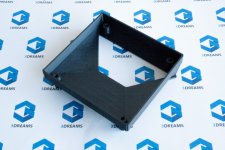joe scian
Very Senior Member
Okay, I get that this thread is separated out from the beta as just noise.
This thread is just about the 86U.
This thread is just about the changes some see in .2B, and I assume not because of anything to do with the Merlin beta, but perhaps something new in the GPL we are first seeing in the beta.
Maybe there is something Asus changed. In the .1 beta, these issues in the 86U led to the discovery that Asus had disabled the CPU_Wait setting, which Merlin then reverted for his fork.
Without that change, and with whatever was going on before, simple extrapolation suggests I would be CPU limited at 100C.
This could be my own 86U, or it could also be everything I've thrown on it, and most likely the latter. For an indeterminate period I am 4000 km from my router, so I can't explore whether, for example, this might be due to the implementation of cake in the beta vs the entware version, or the change in stock, or whether this would be improved without so many addons.
I have absolutely no change in temps on both my AC86U with 386.2 beta as expected. Hovering between 75-81. The AIMesh AC86U node sitting on 66.5
Last edited:



